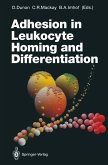Rapid progress continues to be made in understanding the molecular and cellular events that comprise B-Iymphocyte differentiation. This is due in part to the high level of inter est shown by many investigators from diverse disciplines, who find this subject suitable for addressing some of the fundamental issues of immunobiology. B-cell developmen tal models are being extensively used to investigate cell-cell interactions, molecular mediators of differentiation and proliferation, differential onset of gene programs, and gene rearrangement and expression, as well as the generation of the immune response itself. Not surprisingly, increased understanding of B-cell differentiation sometimes results from the application of new techniques that permit greater insight into the cells comprising the system and the genetic mechanisms by which these cells express their differentiative potential. However, experimental strategies based upon the novel application of established technologies havealso led to the clarification of many issues, as well as to the discov ery of previously unrecognized problems. One problem, well recognized by those active in the field, is how to keep up with significant developments as they appear. The purpose of this book, part of a series devoted to analysing current issues in biology, is to help overcome this problem. No attempt at comprehensive cov erage of all of the issues has been made. Rather, a more thorough analysis of a few topics is presented.
Hinweis: Dieser Artikel kann nur an eine deutsche Lieferadresse ausgeliefert werden.
Hinweis: Dieser Artikel kann nur an eine deutsche Lieferadresse ausgeliefert werden.








